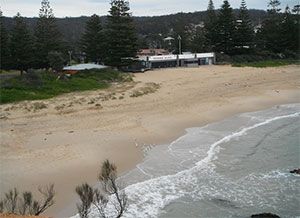Coastal Processess and Hazards
Coastal processes do not operate in isolation, but interact with each other, often in quite complex ways.
Coastal processes have in the past impacted built and natural assets along our coast and reduced the recreational amenity of our beaches. Like other parts of the NSW coast, our coastline suffered significant erosion events during the 1970’s, with major assets such as roads, surfclubs, caravan parks and foreshore recreational areas, all being impacted. The coastal processes and hazards they present are predicted to increase in frequency and magnitude over time given current scenario for climate change and sea level rise.
Coastal processes occur in throughout coastline and estuary environments include:
- Waves
- Tides
- Storms
- Elevated water levels
- Currents
- Waterborne sediment transport
- Dune vegetation
- Windborne sediment transport
- Rainfall and runoff
- Coastal entrances
- Climate change
- Human activities
For further information on coastal processes visit our fact sheet on Coastal Processes.
Coastal processes can lead to coastal hazards which include:
- Beach erosion
- Shoreline recession
- Coastal entrance instability
- Sand drift
- Coastal inundation
- Slope and cliff instability
- Stormwater erosion
For further information on coastal hazards visit our fact sheet on Coastal Hazards.
Climate change is also expected to have physical, chemical and ecological impacts on our coastal environment. Our estuaries in particular will be impacted by changes in rainfall patterns, drought frequency, temperature and mean sea level. More specific effects could include loss of fringing habitat as water levels increase, changes in species composition, changes in entrance behaviour, reduced stream inflow impacting water quality and inundation of private and public property and assets.
Climate change will also likely intensify the impacts from coastal hazards such as beach erosion, shoreline recession, entrance instability, coastal and tidal Inundation. Bega Valley Shire Council has prepared a Coastal Processes and Hazards Definition Study to gain an understanding of the coastal processes that shape our coastline and the inherent coastal risks that arise from these processes.
Bega Valley Shire Coastal Processes and Hazards Study – Final Report
Bega Valley Shire Coastal Processes and Hazards Study - Figures Compendium
- Annex A - Erosion and Recession Hazards Maps - Immediate Planning Horizon
- Annex B - Erosion and Recession Hazards Mpas - 2050 Planning Hoizon
- Annex C - Erosion and Recessin Hazard Maps - 2100 Planning Horizon
- Annex D - Estuary Storm Tide Inundation Hazard Maps - Immediate Planning Horizon
- Annex E - Estuary Storm Tide Inundation Hazard Maps - 2050 Planning Horizon
- Annex F - Estuary Storm Tide Inundation Hazard Maps - 2100 Planning Horizon
- Annex G - Wave Runup Hazard Maps


As we understand more about the impacts of climate change it is wise to take a precautionary principal approach. With regard to land use planning, the precautionary principal approach is often best implemented by the use of substantial foreshore protected areas and setbacks to provide:
- An effective foreshore buffer;
- Functional ecosystems;
- Allow for the natural fluctuations in water levels associated with ICOLLS;
- Allow for the migration of fringing vegetation communities; and
- Buffer private property /assets from future coastal hazards associated with climate change.
This approach also ensures public safety, protection of assets and minimises Council’s (and by extrapolation the community’s) liabilities that may arise through the development approval process.






